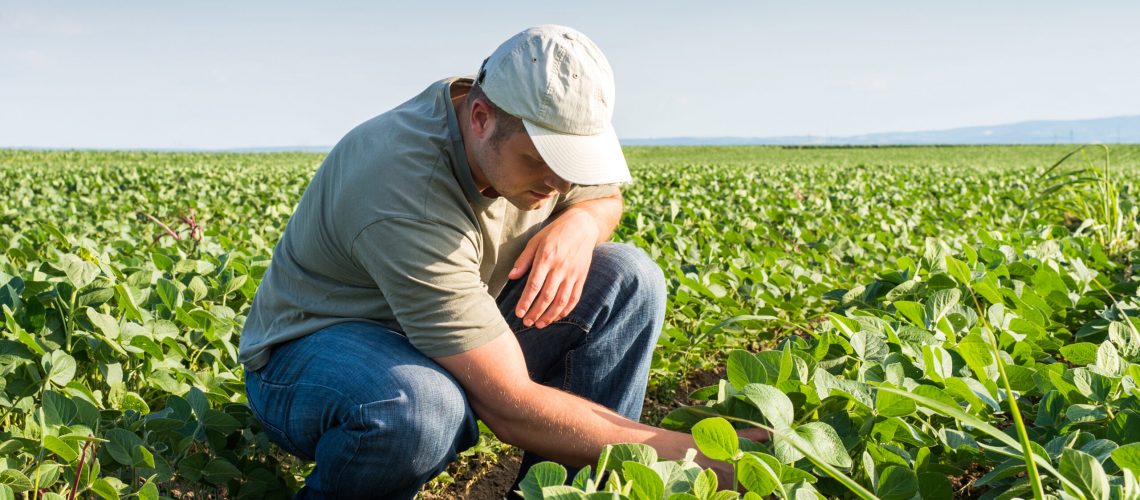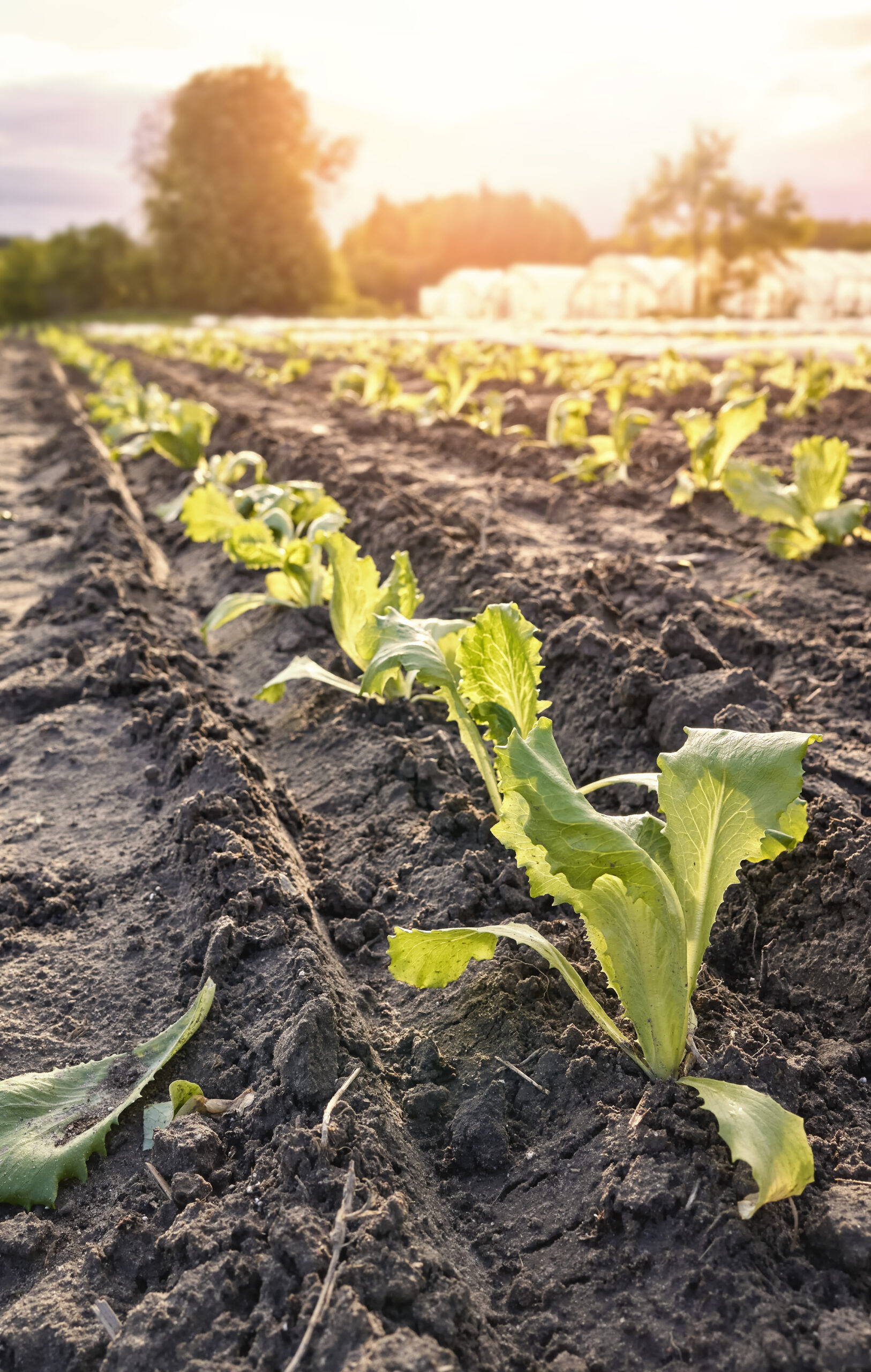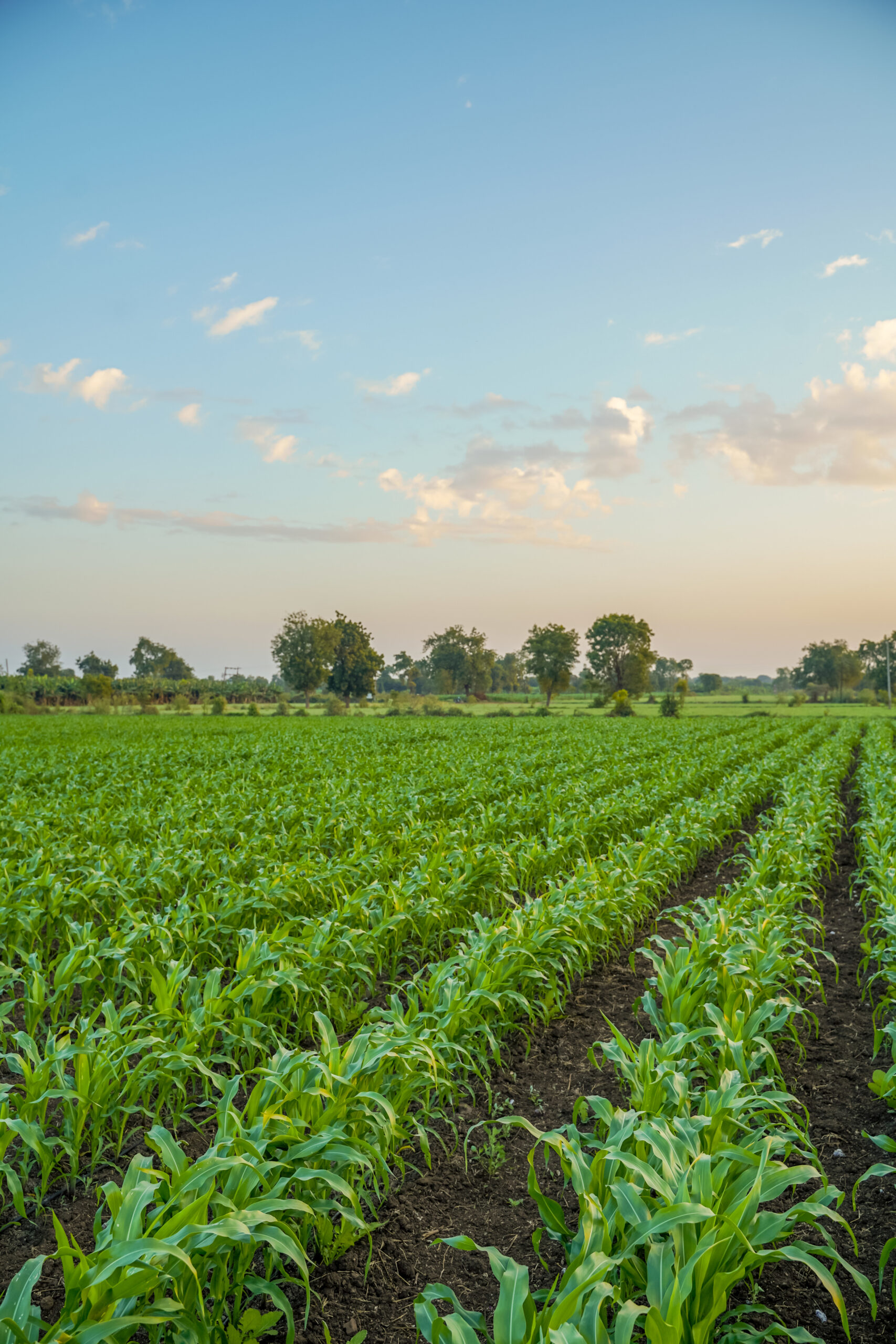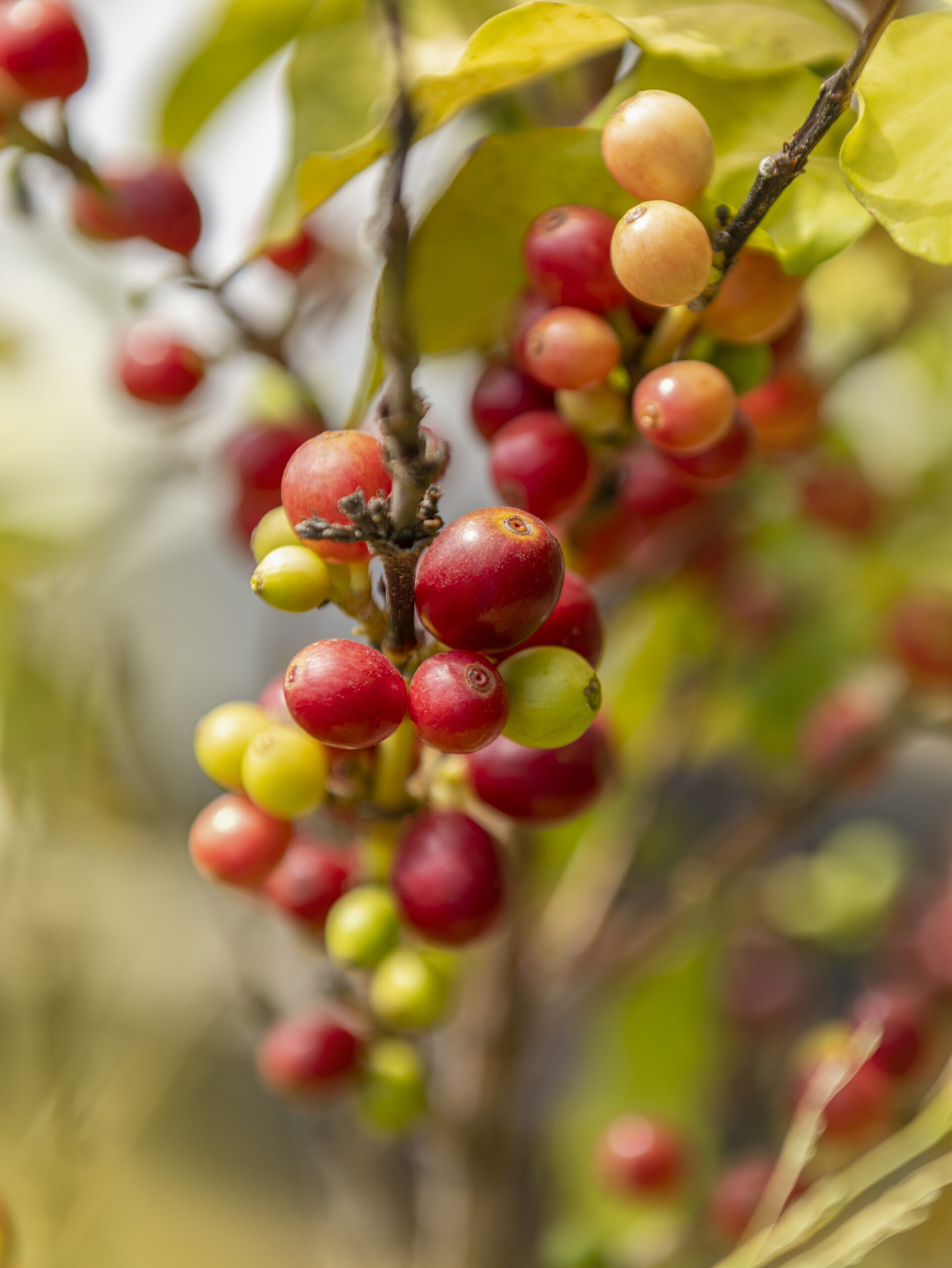This is an abridged version of Dr. Judith Fitzpatrick’s talk at last December’s Acres U.S.A. Eco-Ag conference. Article also featured in the April 2022 issue of Acres U.S.A. magazine.
When a grower first goes organic, they often have one field that’s organic and, right next to it, a field that they’ve been farming conventionally. They run out and test the soil for microbial biomass, and then they write to us and say, “I don’t have any more microbes in my organic field than had in my conventional field.” Why?
It’s because, as a farmer, you have a big, big job when you transition to organic. What you have to have is microbes working for you, and they take time to re-establish after years of conventional farming. We’re all familiar with the food web, but what the conventional pyramid doesn’t communicate is that the microbial base constitutes greater than 95 percent of the food web biomass because all the life above it depends on this food source.
You can view the plant-microbe relationship as a marriage. Each one has a role to play, and they support each other. The plant delivers 30 to 50 percent of the food that it makes to the microbes in the soil in an organic system, and the microbes synthesize and mine the nutrients in the soil and deliver them to the plant. This is a marketplace.
A key player in the marketplace are the arbuscular mycorrhizal fungi. Arbuscular means “room” or “little house.” Arbuscular mycorrhizal fungi actually live — part of them — inside the plant. Outside of the plant they’re picking up phosphorus, nitrogen, potassium, sulfur, and other minerals. When these are transported to the plant, the fungi trade them for the carbon they need — 50 percent of the dried weight of microbes is carbon, as all organic molecules are carbon based.
Arbuscular mycorrhizal fungi hyphae also connect them to other plants. This is especially true in forests. Scientists have shown that arbuscular mycorrhizae will give more phosphorus and other minerals to the plant that gives it more carbon. And they are key players in disease prevention.
The plant-microbe symbiosis is a sophisticated system based on needing each other. In conventional agriculture, you feed the plants directly with chemicals; the plant does not need microbes, so it does not nurture them, and you have a microbe-deficient soil. Microbes do more than feed the plant the nutrients you used as fertilizer, or that they manufacture — they build soil structure, support plant immunity and mine micronutrients in the soil for your plant. When you don’t rely on chemicals, you’re going to be reliant on microbes to feed your plant, and the microbes will build soil structure, mine nutrients for the plant and protect them from pathogens.
We have recently discovered that rhizophagy is an important way that bacteria deliver nutrients to plants. The plant puts out exudates that bring in the microbes it wants to inhabit the rhizosphere. These microbes are often referred to as plant-growth-promoting bacteria because they stimulate plant growth. Bacteria in the rhizosphere enter the root. As they migrate up the root, about 40 percent of their nutrients are extracted by the plant. In return, the plant gives them carbon and forms root hairs through which the bacteria can reenter the soil. Dr. James White has shown that plants that do not have these plant-growth promoting bacteria do not form these important root hairs. He has also shown — and other studies have shown too — that a plant can get 40 percent of its nitrogen, as well as other nutrients, through rhizophagy.
Conventional farming replaces the need for microbes by giving plants NPK, etc. What happens to your plant when you do this? If you put down nitrogen, you do not get the same amount of root growth as when the plant and microbes have nurtured the root. If the plant doesn’t need nitrogen, it doesn’t feed the microbes as much. It’s devastating. When you consider putting on nitrate and ammonium, think about the effect on the root and all the important contributions roots make to soil — e.g., plant stability and fertilizer.
When you go organic, or when you’re maintaining it, your job is to continue to either improve this broken marriage or to maintain it. If the land has been farmed conventionally, you have four big problems: poor soil, a decimated microbial population, a poor crop-microbe fit, and depleted soil organic matter or carbon stores — 50 percent of the carbon that was stored in our soil has been lost.
We’re stuck growing our microbes in a poor soil environment in which they’ve lost their homes. Microbes live on sticky pieces of soil and within aggregates. They multiply inside the aggregates, and in there they are protected from grazers like amoeba. These aggregates are formed by tiny roots and by fungi, providing microbial homes. They are what makes a healthy soil structure, because they allow soil to hold air and water and to prevent erosion. They’re not steady; they can go away if microbes and plant are not continually rebuilding them. In soils that have been chemically treated for years, you do not have good soil structure — you have eroded, compacted soil.
BUILDING SOIL STRUCTURE
How do the microbes build soil structure? A microbe has to attach to the soil — otherwise it will wash away, the same way chemical nutrients do. So, it secretes sticky substances. The best sticky substance is made by fungi. It’s called glomalin. These sticky substances are nutrient rich, and they allow the microbe to stick to the soil. They are very long lasting — even after the microbe dies, these sticky substances stay around, and they cause the particles of soil to stick to one another. They’re what build your soil structure. By increasing your microbes, you’re increasing your soil structure.
Depleted carbon stores also reduce food security for microbes and, by extension, plants. Microbes make soil organic matter (SOM) from the plant material. Plant roots are a very rich source of SOM for soil. That’s why cover crops work so well — they not only nurture microbes and protect the soil surface from erosion, but they’re great for building SOM. The dead roots are an excellent food source for microbes, and the digested material becomes attached to mineral surfaces. When the microbes die, they also become humus.
It’s a relatively recent understanding that 60 percent or more of the SOM that we call humus is actually the bodies of dead microbes. The rest is material that’s been digested by microbes. So, it’s going to be impossible to increase your SOM without increasing your microbes. Increasing your SOM is important because the SOM is the best indicator of plant health.
You can put down a meal like sugar— a lot of the amendments you put down are basically just sugars — that will cause the microbial population to expand. But if there’s not backup food sources from the generations of microbes that came before, or a slowly digestible fertilizer source, the population quickly dies off. It’s like giving a kid candy — it’s not going to build muscle. The amount of microbial biomass correlates very closely with the SOM that’s available to the microbes in that soil, in both humus and recently supplied fertilizer foods.
The number of bacteria in the rhizosphere is going to be much higher than in the surrounding soil, but it’s the surrounding soil that you measure most of the time. I call that the suburbs. The suburbs reflect much of what’s going on in the rhizosphere, but with a lower population. In a bare field, the microbial population is way down. This is one of the reasons that your cover crop is so important. Cover crops help maintain the plant-microbe process, so the microbial population is maintained and SOM increases to provide the carbon and other nutrients that your plant’s microbes will need for the coming cash crop.
Bacteria have about one one-thousandth of the DNA that we have. So, for most of their functions, they’re depending on molecules produced by other microbes. Every cell in your body — every cell in the world — is a gated community. Air and water can go in and out, but absolutely everything else has a receptor. Your microbes are very picky eaters because they have few receptors and few enzymes for digestion. We can only grow about 1 percent of soil microbes in the lab because you have to find out exactly all the different things that you have to provide for that one particular bacteria to grow.
If I take soil and plate it in the lab, the next day I might see one or two colonies. But if I let it go a couple of months, many different colonies start popping up — one today, another tomorrow — all different colonies. One needs another. We don’t yet know the nutritional requirements of all these different bacteria. What we do know is the system is self-sustaining, as one microbe starts to flourish and creates the food another microbe needs; then that microbe starts flourishing, and the chain continues. That is why a soil amendment that feeds the microbes is so effective. They start the process and allow the natural system to start to rebalance itself. This is also why microbial diversity increases as microbial biomass increases, as evidenced by the fact that the fungal population tends to increase in step with the increase in microbial biomass.
Just because you put down a bacteria in the soil doesn’t mean that it has a community that can support it. It’s like taking anybody with one talent and putting them in a community. There may not be the need for their talent, and there may not be the resources that they need in order to function.
Another thing that we’re just beginning to learn is that many currently used cash crops have been bred to thrive under conventional farming practice and have lost the ability to effectively communicate with microbes. This further complicates the transition to regenerative farming and encourages farmer dependance on chemical fertilizers. Now scientists are crossbreeding with some of the older species and increasing the synergism between the microbe and the plant. They’ve been able to get nice increases in productivity when they do that, because regenerative growers are dependent on microbes to deliver the nutrients the plant needs.
When farming chemically, the lab provides an NPK formula. For implementing regenerative farming, you guys have been the pioneers and the researchers, because there is no formula for this — every healthy soil develops a population of microbes that is unique to your soil, climate and crops. Even down the road from one another, people have different soils. To a great extent, you farmers are the underrecognized regenerative researchers.
DIFFERENT MICROBES FOR DIFFERENT SOILS
It’s amazing what different cover crops do for different soils. A group in New York City planted different cover crops in 6-inch pots of soil from an abandoned lot, where the microbial biomass was very low. After three weeks they looked at the soil microbial biomass. There was a tremendous difference in the number of microbes that could be measured in just a few weeks. Clover gave almost a 600 percent increase. In this case, wheatgrass was much lower. We’ve done studies with the University of Tennessee; there, hairy vetch was the winner. They have different soil, and they were growing cotton.
The point is that your soil is going to react differently with every cover crop. I spoke one time at a potato conference, and I said, “We really should have a place where farmers could just send in a piece of their soil and say to the lab, ‘I want to grow this; what cultivar should I use, and what cover crop should I use, and what actually works with my soil?’” At the end of my talk, everyone said, “Where do I send my soil?” I said, “Unfortunately, there is no place you can send your soil to have that work done. But it would be nice.” Also, as farmers know, growing and experimenting inside is not the same as outside.
ESTABLISHING OPTIMAL MICROBIAL BIOMASS
A lot of people ask us, what affects the microbe level I am measuring? Number one is moisture. We only test soils that are fresh, field-moist samples. They will contain as much as four times as many microbes as dried soil. If we revive a dried soil in the laboratory, the population of microbes is different in composition, and often in biomass, than that same population in field-moist soil. We especially see a big difference in the fungal-to-bacterial ratio because fungi seem to be more susceptible to drying out. We developed our on-site test at the suggestion of James Sottilo, one of our founders, who said, “I can’t send my samples to a lab. It’s like sending a body to a lab and asking how it’s doing after it’s been three days in the U.S. Post Office. And I need an answer now —not in two weeks.”
Microbe levels are also dependent on adequate nutrient levels, favorable pH and low compaction. If you have compacted soil, there’s not enough oxygen in it, so your microbial biomass will be low. Any disruption, like tilling, can greatly affect your microbial biomass. Temperature, salt and other chemicals affect microbial diversity and your crop. Other experiments have shown that as temperature goes up, microbial biomass goes down — but respiration, which indicates activity, goes up.
Microbial biomass varies over the season. Different test systems give quite different results, so you should stick with one system for monitoring. Interestingly, in spring, when the plant first wakes up and puts out a big boost to stimulate the microbes, we see a doubling of the microbial biomass, which then drops down. That’s called the priming effect. A fertilizer can also have a priming effect.
It is very important that after a priming effect there is sufficient food for the microbes that have been stimulated. For most soils, this requires that the fertilizer have the correct C:N ratio for the soil and crop. A fertilizer with too high a C:N ratio will boost respiration, which means the carbon is being released as CO2, but it will not allow the microbes to store the C in the organic carbon compounds that the microbes need to nourish the plant and build soil structure.
Microbial respiration — the amount of carbon dioxide released by a given weight of soil — is a measure of microbial activity and is not necessarily correlated with microbial biomass. These two measurements tell you two different things. The most important information you can get from testing is what is called the metabolic quotient (q). The q number = respiration / microbial biomass. If respiration of a given microbial biomass is higher than it should be, your fertilizer is being released into the air and not helping your microbes and plants to grow. Luckily, the fungal-to bacterial ratio correlates almost perfectly with q and tells you that you’re building fertility, not releasing it into the air as CO2.
In an organic or sustainable system, you’re entirely or largely dependent on the microbial community for immunity to pathogens. I can’t emphasize enough that the immune system of the plant is microbial. If the plant gets an infection of its leaves, it sends a message to the
root to bring in the bacteria that makes the antibiotic that it needs to fight that infection. If you don’t have those microbes, you can’t do that. Plants, like people, need to be exposed to a whole variety of microbes — not just good microbes. A huge study in Europe showed that organic farms required 97 percent fewer pesticides of any sort. What a gain in cost savings and food health!
Plants need to be exposed to and learn the ways of bad microbes. Organically grown plants develop 2,000 antioxidant compounds that are not in plants that are grown non-organically with chemicals. Those antioxidants protect the plant and when ingested provide protection against inflammation, cancer, etc. In addition, it is these antioxidants that plants make to defend themselves against disease that give microbially nourished plants the flavors that make them so much more desirable.
Your plant is also dependent on microbes for its required minerals and nitrogen, for digesting litter to increase soil matter, for providing information about soil conditions that allow the plant to adapt and for creating soil structure that increases water holding capacity — when you have an adequate microbial population, you increase your water holding capacity by 50 percent. Microbes also increase soil structure — protecting soil from erosion while building soil organic matter. It is important to point out here that soil organic carbon is what is measured, but it is stored in SOM — molecules containing NPK and all the other nutrients plants need.
The key to transitioning, then, is to provide the environment that will allow your microbial community to rebuild itself. There’s no formula for it. The right formula will depend on your soil, your climate and your crops. We know that the microbial community can do this by itself, given the right foods and opportunity. And you can tell if you’re going in the right direction by measuring microbial biomass and fungal-to-bacterial ratio.




